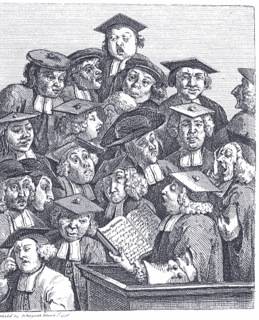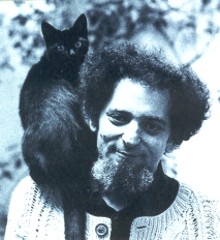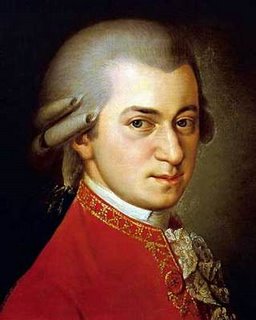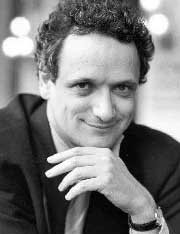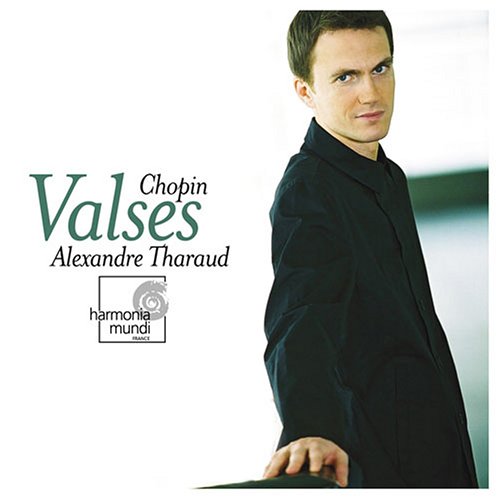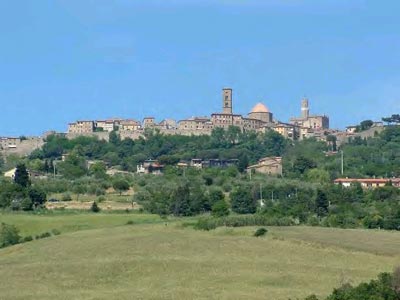Last month | Next monthClassical Month in Washington is a monthly feature that appears on the first of the month. If there are concerts you would like to see included on our schedule, send your suggestions by e-mail (ionarts at gmail dot com). Happy listening!October 1, 2006 (Sun)
2 pmDuke Bluebeard's Castle and Gianni SchicchiWashington National Opera
Review -- Jens F. Laurson (Ionarts, September 23)
October 1, 2006 (Sun)
3 pmBaltimore Symphony Orchestra (Yuri Temirkanov, Nancy Maultsby)
Mahler,
Kindertotenlieder, and Shostakovich, Fifth Symphony
Meyerhoff Symphony Hall (Baltimore, Md.)
Review -- Jens F. Laurson (Ionarts, September 30)
October 1, 2006 (Sun)
3 pmSuspicious Cheese LordsMousetrap Concert Series (Washington Grove, Md.)
October 1, 2006 (Sun)
4 pmIrina Nuzova, piano with cello [FREE]
Phillips Collection
October 1, 2006 (Sun)
6:30 pmOctuor de France [FREE]
Late 19th– and early 20th–century French music
National Gallery of ArtOctober 2, 2006 (Mon)
7:30 pmJérôme Hantaï (viola da gamba) and Maude Gratton (harpsichord)La Maison Française
Review -- Charles T. Downey (Ionarts, October 4)
October 3, 2006 (Tue)
12 noon
Noontime Cantata Series (
In allen meinen Taten, BWV 97)
Washington Bach Consort
Church of the Epiphany (1317 G Street NW)
Review -- Jens F. Laurson (Ionarts, October 8)
October 3, 2006 (Tue)
5:30 pmMadeleine Shapiro, celloNew works for cello and electronics
Clarice Smith Performing Arts Center
October 3, 2006 (Tue)
7 pmAn Evening with Leonard Slatkin (conversation with Yvonne Caruthers)Smithsonian Resident Associates
S. Dillon Ripley Center, Education Center (1100 Jefferson Drive SW)
October 3, 2006 (Tue)
7:30 pmDuke Bluebeard's Castle and Gianni SchicchiWashington National Opera
October 4, 2006 (Wed)
7:30 pmMozart through His Letters and Operas [FREE, donations welcome]
Sorab Modi, with members of Domingo-Cafritz Young Artist Program, Washington National Opera
Austrian Embassy (3524 International Court NW)
Review -- Charles T. Downey (Ionarts, October 5)
October 5, 2006 (Thu)
7 pmNational Symphony Orchestra, with James GalwayKennedy Center Concert Hall
Review -- Jens F. Laurson (Ionarts, October 6)
October 5, 2006 (Thu)
7 pm?Dezsõ Ránki and Edit Klukon, piano
Music by Erik Satie and Barnabás Dukay
Embassy of HungaryOctober 5, 2006 (Thu)
7:30 pmNicholas Maw, Sophie's ChoiceWashington National Opera
October 5, 2006 (Thu)
8 pmBaltimore Symphony OrchestraWith Yuri Temirkanov (conductor) and Yefim Bronfman (piano)
Shostakovich, Tahiti Trot, second piano concerto, tenth symphony
Meyerhoff Symphony Hall (Baltimore, Md.)
October 5, 2006 (Thu)
8 pmLuciana Souza Quartet and Brazilian Duos, with guitarist Romero Lubambo [FREE]
Library of CongressReview -- Gail Wein (
Washington Post, October 7)
October 6, 2006 (Fri)
7 pmNational Symphony Orchestra, with James GalwayKennedy Center Concert Hall
October 6, 2006 (Fri)
7:30 pmAima Labra-Makk, piano
Austrian Embassy (3524 International Court NW)
Review -- Cecelia Porter (
Washington Post, October 9)
October 6, 2006 (Fri)
8 pmBaltimore Symphony OrchestraWith Yuri Temirkanov (conductor) and Yefim Bronfman (piano)
Shostakovich, Tahiti Trot, second piano concerto, tenth symphony
Meyerhoff Symphony Hall (Baltimore, Md.)
October 6, 2006 (Fri)
8 pmTales of Canterbury: Music of Medieval EnglandFolger Consort
Folger Shakespeare Library
Review -- Joan Reinthaler (
Washington Post, October 9)
October 7, 2006 (Sat)
11 amBaltimore Symphony Orchestra (casual concert), with Yuri Temirkanov (conductor)
Shostakovich, Tahiti Trot and tenth symphony
Meyerhoff Symphony Hall (Baltimore, Md.)
October 7, 2006 (Sat)
1:30 pmRadio Broadcast:
Das RheingoldWashington National Opera
NPR World of Opera (in Baltimore-Washington: 91.5, 90.9)
Review -- Jens F. Laurson (Ionarts, April 1, 2006)
October 7, 2006 (Sat)
5 and 8 pmTales of Canterbury: Music of Medieval EnglandFolger Consort
Folger Shakespeare Library
October 7, 2006 (Sat)
7 pmDuke Bluebeard's Castle and Gianni SchicchiWashington National Opera
October 7, 2006 (Sat)
8 pmNational Symphony Orchestra, with James GalwayKennedy Center Concert Hall
October 7, 2006 (Sat)
8 pmConcert for Steve Reich's birthday (Music For Pieces of Wood, Electric Counterpoint, Tehillim)
Great Noise Ensemble
Unitarian Universalist Church (Silver Spring, Md.)
Review -- Charles T. Downey (Ionarts, October 9)
October 7, 2006 (Sat)
8 pmLeft Bank Concert SocietyMusic by Janáček, Yun, Moss, Smetana
Clarice Smith Performing Arts Society (College Park, Md.)
October 8, 2006 (Sun)
12 noonPaquito d'Rivera, jazz saxophonist
National Gallery of Art, Sculpture Garden
October 8, 2006 (Sun)
2 pmTales of Canterbury: Music of Medieval EnglandFolger Consort
Folger Shakespeare Library
October 8, 2006 (Sun)
4 pmCleveland Orchestra (Franz Welser-Möst, music director)
Washington Performing Arts Society
Kennedy Center Concert Hall
Review -- Jens F. Laurson (Ionarts, October 11)
October 8, 2006 (Sun)
4 pmMirjana Rajic, piano [FREE]
Phillips Collection
October 8, 2006 (Sun)
5 pmInscape Chamber Music ProjectWilliam Walton,
Façade Entertainments; Bach, Suite No. 1; Revueltas
Episcopal Church of the Redeemer (Bethesda, Md.)
October 8, 2006 (Sun)
6:30 pmLouis Lortie, pianist [FREE]
Music by Ades, Chopin, and Liszt
National Gallery of ArtReview -- Charles T. Downey (Ionarts, October 9)
October 9, 2006 (Mon)
7 pmNicholas Maw, Sophie's ChoiceWashington National Opera
October 9, 2006 (Mon)
7 pmHeather Raffo, playwright
Discussion of her experiences in Iraq creating
Nine Parts of DesireNational Press Club For more information, contact Tiffany Brown (tbrown at arenastage dot org) or (202) 554-9066 ext. 227
October 9, 2006 (Mon)
7:30 pmJames Madison University School of Music: Carrie Stevens, mezzo-soprano with Gabriel Dobner, pianoKennedy Center Terrace Theater
October 10, 2006 (Tue)
8 pmDenyce Graves, mezzo-sopranoWashington Performing Arts Society
Kennedy Center Concert Hall
Review -- Jens F. Laurson (Ionarts, October 13)
October 11, 2006 (Wed)
8 pmBeaux Arts Trio [FREE]
Music by Schubert, Shostakovich, Turnage
Library of Congress (pre-concert presentation with Rachel Franklin, 6:15 pm)
Review -- Jens F. Laurson (Ionarts, October 14)
October 12, 2006 (Thu)
7:30 pmAnnlynn Miller (piano) and Ulrich Schmid (cello)
The Swiss Residence (2920 Cathedral Avenue NW)
October 12, 2006 (Thu)
7:30 pmSharona Joshua, Broadwood pianoMansion at Strathmore
October 13, 2006 (Fri)
7:30 pmHines-Lee Opera Ensemble: 2006 Gala ConcertKennedy Center Terrace Theater
October 13, 2006 (Fri)
7:30 pmTeddy Roosevelt and the Treasure of Ursa Major (ages 9 and up)
World premiere Tom Isbell's new theater work with songs by Mark Russell
Runs through November 2, various times
Kennedy Center Family Theater
Review -- Jayne Blanchard (
Washington Times, October 18)
October 13, 2006 (Fri)
8 pmMandelring String Quartet
Quartets by Haydn, Ligeti, Brahms
Library of Congress (pre-concert presentation, 6:15 pm)
Review -- Jens F. Laurson (Ionarts, October 15)
October 13, 2006 (Fri)
8 pmBaltimore Symphony Orchestra: Tales and LegendsSymphony with a Twist Series
Music Center at Strathmore
Review -- Joe Banno (
Washington Post, October 16)
October 13, 2006 (Fri)
8 pmVega String Quartet (Beethoven, Wolf, Ravel)
Friends of MusicDumbarton Oaks
October 13, 2006 (Fri)
8 pmBizet, CarmenVirginia Opera
George Mason University Center for the Arts
Review -- Mark J. Estren (
Washington Post, October 16)
October 13, 2006 (Fri)
8 pmTurtle Island String Quartet and Ying QuartetMusic by Mozart, Milhaud, Summer, Balakrishnan, Price
The Barns at Wolf Trap
October 14, 2006 (Sat)
2 pmAnika Vavic, pianoWashington Performing Arts Society
Kennedy Center Terrace Theater
Hatchet job Review -- Tim Page (
Washington Post, October 16)
October 14, 2006 (Sat)
4 pmWashington National Opera:
Welcome to OperaSelections by Mozart and Puccini, conducted by Plácido Domingo
Tickets: $25
Kennedy Center Opera House
Review -- Tim Page (
Washington Post, October 16)
October 14, 2006 (Sat)
7:30 pmGustav Holst, Choral Hymns from the Rig Veda [FREE]
Concert in honor of the 100th Anniversary of Freer's donation to the Smithsonian
Woodley Ensemble
Freer Gallery of ArtOctober 14, 2006 (Sat)
7:30 pmKayhan Kalhor (kamancheh) and Erdal Erzincan (baglama)Washington Performing Arts Society
Kennedy Center Terrace Theater
Review -- Andrew Lindemann Malone (
Washington Post, October 16)
October 14, 2006 (Sat)
8 pmNational Philharmonic: Symphony with a SaxMusic Center at Strathmore
October 14, 2006 (Sat)
8 pmVega String Quartet (Beethoven, Wolf, Ravel)
Friends of MusicDumbarton Oaks
October 14, 2006 (Sat)
8:15 pmRossini,
L’Assedio di Corinto (The Siege of Corinth)
Elizabeth Futral
Baltimore OperaReview -- Charles T. Downey (Ionarts, October 16)
October 15, 2006 (Sun)
2 pmBizet, CarmenVirginia Opera
George Mason University Center for the Arts
October 15, 2006 (Sun)
4 pmEmanuel Ax with the Orpheus Chamber OrchestraWashington Performing Arts Society
Music Center at Strathmore
Review -- Jens F. Laurson (Ionarts, October 20)
October 15, 2006 (Sun)
4 pmChoir of Westminster Cathedral (London, England)
Martin Baker, director
Washington National CathedralOctober 15, 2006 (Sun)
4 pmJoseph Petric (accordion) and Norman Forget (oboe)Phillips Collection
October 15, 2006 (Sun)
5 pmFall Concert, Capitol City SymphonyBeethoven, Consecration of the House; Haydn, Symphony No. 96 ("Miracle"); Walker, Lyric for Strings; Liszt, Les Preludes
Atlas Performing Arts CenterOctober 15, 2006 (Sun)
5 pmWashington Metropolitan PhilharmonicMusic by Dawson, Shostakovich, Kowalski, Starer
Bishop Ireton High School (Alexandria, Va.)
Review -- Mark J. Estren (
Washington Post, October 17)
October 15, 2006 (Sun)
5:30 pmEmerson String Quartet with Menahem Pressler, pianoMozart, Divertimento, K. 563; Brahms, first piano quartet
Shriver Hall (Baltimore, Md.)
Review -- Charles T. Downey (Ionarts, October 17)
October 15, 2006 (Sun)
6:30 pmAlessandra Marc, soprano [FREE]
19th–century French music
National Gallery of ArtOctober 15, 2006 (Sun)
7 pmVega String Quartet (Beethoven, Wolf, Ravel)
Friends of MusicDumbarton Oaks
October 15, 2006 (Sun)
7:30 pmMilky Way: Story of the Sky Hung over a Paulownia TreeSoon-ja Ji and Korean Traditional Music
Kennedy Center Terrace Theater
October 15, 2006 (Sun)
7:30 pmTribute to François LoupOpera LafayetteLa Maison Française
Review -- Cecelia Porter (
Washington Post, October 17)
October 16, 2006 (Mon)
6 to 8 pmHeather Raffo, Discussion and Book Signing
Busboys and Poets (2021 14th Street NW)
October 16, 2006 (Mon)
8 pmIn Memoriam 50 Years: The Hungarian Uprising
Trio Levinson
Embassy SeriesEmbassy of Hungary (2950 Spring of Freedom Street NW)
Review -- Stephen Brookes (
Washington Post, October 18)
October 18, 2006 (Wed)
7 pmLecture: Maya Lin, architect [FREE]
Clarice Smith Distinguished Lectures in American Art
Free tickets available beginning at 6 pm at the G Street lobby information desk (limit 2 tickets per person)
Reynolds Center (McEvoy Auditorium)
October 18, 2006 (Wed)
7:30 pmRossini,
L’Assedio di Corinto (The Siege of Corinth)
Elizabeth Futral
Baltimore OperaOctober 18, 2006 (Wed)
8 pmMontage (Sarita Uranovsky, violin; Marc Moskovitz, cello; Debra Ayers, piano)
With Janna Baty, mezzo-soprano
Schoenberg/Zemlinksy, Dehmel Songs; Zemlinsky, Cello Sonata (North American premiere); and Schoenberg, Verklärte Nacht (transcription for piano trio by Eduard Steuermann)
Library of Congress (pre-concert presentation with cellist Marc Moskovitz, 6:15 pm)
Review -- Charles T. Downey (Ionarts, October 20)
October 18, 2006 (Wed)
8 pmPolly Ferman, piano
Embassy SeriesCuban Interests Section
October 19, 2006 (Thu)
7 pmNational Symphony Orchestra, with cellist Lynn HarrellWith the Washington Chorus (Ravel's complete ballet score for
Daphnis et Chloé)
Kennedy Center Concert Hall
Review -- Jens F. Laurson (Ionarts, October 20)
October 20, 2006 (Fri)
1:30 pmNational Symphony Orchestra, with cellist Lynn HarrellWith the Washington Chorus (Ravel's complete ballet score for
Daphnis et Chloé)
Kennedy Center Concert Hall
October 20, 2006 (Fri)
7 pmMaster Chorale of Washington: Mozart and HandelRoyal Fireworks Music, Coronation Anthems, Great Mass
Kennedy Center Concert Hall
October 20, 2006 (Fri)
7:30 pm13th Evelyn Lear and Thomas Stewart Emerging Singers Concert
The German Embassy (4645 Reservoir Road NW)
Review -- Jens F. Laurson (Ionarts, October 24)
October 20, 2006 (Fri)
8 pmPolly Ferman, piano
Embassy SeriesCuban Interest Section
October 20, 2006 (Fri)
8 pmKevin Wetzel (baritone) and Patricia Puckett (piano) [FREE]
The Voice of Russia: Songs by Georgy Sviridov
Georgetown UniversityOctober 20, 2006 (Fri)
8:15 pmRossini,
L’Assedio di Corinto (The Siege of Corinth)
Elizabeth Futral
Baltimore OperaOctober 21, 2006 (Sat)
4 pmAndrás Schiff with Cappella Andrea BarcaAll-Mozart program
Washington Performing Arts Society
Kennedy Center Concert Hall
Review -- Jens F. Laurson (Ionarts, October 26)
October 21, 2006 (Sat)
5 pm (pre-concert discussion at 4 pm)
21st Century Consort: American RETROSPECulaTIVEWith baritone William Sharp
Music by Wuorinen, Froom, Ives/Ellington, and Aaron Copland's Sextet
Reynolds Center for American Art and Portraiture
October 21, 2006 (Sat)
8 pmBach and the USSR (Alfred Schnittke,
Requiem, and works by J. S. Bach)
Cantate Chamber SingersSt. Paul’s Lutheran Church (4900 Connecticut Avenue NW)
Review -- Andrew Lindemann Malone (
Washington Post, October 23)
October 21, 2006 (Sat)
8 pmBaltimore Symphony Orchestra (Beethoven, Brahms, Barber)Günther Herbig (conductor) and Stefan Jackiw (violin)
Music Center at Strathmore
Review -- Daniel Ginsberg (
Washington Post, October 25)
October 21, 2006 (Sat)
8 pmNational Symphony Orchestra, with cellist Lynn HarrellWith the Washington Chorus (Ravel's complete ballet score for
Daphnis et Chloé)
Kennedy Center Concert Hall
October 21, 2006 (Sat)
8 pmMaya Beiser, celloKennedy Center Terrace Theater
Review -- Stephen Brookes (
Washington Post, October 23)
October 21, 2006 (Sat)
8 pmFairfax Symphony Orchestra with violinist Timothy FainGeorge Mason University Center for the Arts
October 21, 2006 (Sat)
8:30 pmRobert Cohen, celloJewish Community Center of Greater Washington (Rockville, Md.)
October 22, 2006 (Sun)
2 pmKennedy Center Chamber Players (Mozart, Ravel, Bruckner)
Kennedy Center Terrace Theater
Review -- Jens F. Laurson (Ionarts, October 28)
October 22, 2006 (Sun)
3 pmRossini,
L’Assedio di Corinto (The Siege of Corinth)
Elizabeth Futral
Baltimore OperaOctober 22, 2006 (Sun)
3 pmJupiter Symphony Chamber Players [FREE]
Weber’s Clarinet Quintet, Bruch’s Septet for Winds and Strings, Brahms’s String Quintet
National Academies of Science (2100 C Street NW)
October 22, 2006 (Sun)
3 pmMasterpieces of Russian Vocal Music: The Turbulent 20th Century
Songs by Shostakovich, Prokofiev, and Sviridov
Russian Chamber Art SocietyThe Lyceum (Alexandria, Va.)
October 22, 2006 (Sun)
4 pmShalev Ad-El ensemble [FREE]
Phillips Collection
October 22, 2006 (Sun)
5 pmWashington Metropolitan PhilharmonicMusic by Dawson, Shostakovich, Kowalski, Starer
Church of the Epiphany (1317 G Street NW)
October 22, 2006 (Sun)
6:30 pmNational Gallery Orchestra with pianist Ann Schein [FREE]
Music by Beethoven, Ibert, Mozart, and Wagner
National Gallery of ArtOctober 22, 2006 (Sun)
7 pmKronos Quartet
Michael Gordon’s
The Sad Park and other new music
Lisner AuditoriumReview -- Tom Huizenga (
Washington Post, October 25)
October 22, 2006 (Sun)
7 pmIvo Pogorelich, pianoGeorge Mason University Center for the Arts
Assassination Review -- Tim Page (
Washington Post, October 24)
October 22, 2006 (Sun)
7:30 pmRobert Cohen, celloJewish Community Center of Greater Washington (Rockville, Md.)
October 23, 2006 (Mon)
8 pmAmerican Creativity: The Composer (The Music of Jonathan Larson)
Selections from
Rent and other Broadway works
Library of Congress (pre-concert presentation with Mark Horowitz, 6:15 pm)
Full-page major article (why?) Review -- Peter Marks (
Washington Post, October 25)
October 25, 2006 (Wed)
6 pmShostakovich: Rebel MusicKennedy Center Terrace Theater
October 25, 2006 (Wed)
8 pmValery Gergiev, Kirov OrchestraShostakovich,
Symphony No. 11 ("The Year 1905")
Washington Performing Arts Society
Kennedy Center Concert Hall
Review -- Jens F. Laurson (Ionarts, October 28)
October 27, 2006 (Fri)
7:30 pmChiara String Quartet
Kreeger MuseumReview -- Robert Battey (
Washington Post, October 30)
October 27, 2006 (Fri)
8 pmUniversity of Maryland Symphony/Liz Lerman Dance ExchangeJohn Adams,
Chairman Dances; Strauss,
Don JuanClarice Smith Performing Arts Center (College Park, Md.)
October 27, 2006 (Fri)
8 pmDaniel Buranovský, piano
Embassy SeriesEmbassy of Slovakia
Review -- T. J. Ponick (
Washington Times, October 30)
October 28, 2006 (Sat)
7 pmAxelrod Quartet (Haydn, Schubert, Bartók)
Playing on Stradivarius and Amati instruments
Renwick Gallery, Smithsonian American Art Museum
October 28, 2006 (Sat)
7:30 pmPurcell,
Dido and Aeneas (concert performance)
Bach Sinfonia and Chantry
Woodside United Methodist Church
Review -- Andrew Lindemann Malone (
Washington Post, October 30)
October 28, 2006 (Sat)
8 pmFreedom Concert (followed by film screening)
Ádám György and Steven Spooner, piano
Music by Hungarian composers
Abramson Family Recital Hall, Katzen Arts Center
October 28, 2006 (Sat)
8 pmJCC Symphony Orchestra, with Evelyn Elsing, cellistBerlioz, Overture to Beatrice and Benedict; Tchaikovsky, Overture-Fantasia, Romeo and Juliet; Prokofiev, Sinfonia Concertante
Jewish Community Center of Greater Washington (Rockville, Md.)
October 29, 2006 (Sun)
1 and 3 pmNSO Family Concert: Spooky Sounds and Scary Tales (ages 7 and up)
Emil de Cou, Associate Conductor
Kennedy Center Concert Hall
Review -- Charles T. Downey and Master Ionarts (Ionarts, October 31)
October 29, 2006 (Sun)
4 pmVerdehr Trio, violin, clarinet, and piano [FREE]
Phillips Collection
Review -- Daniel Ginsberg (
Washington Post, October 31)
October 29, 2006 (Sun)
4 pmTrio di Parma
Foundation for Advanced Education in the SciencesCongregation Beth-El (Bethesda, Md.)
October 29, 2006 (Sun)
6:30 pmOpus 3 Trio [FREE]
Music by Haydn, Leshnoff, Shostakovich, and Brahms
National Gallery of ArtOctober 29, 2006 (Sun)
6:30 pmAxelrod Quartet (Haydn, Schubert, Bartók)
Playing on Stradivarius and Amati instruments
Renwick Gallery, Smithsonian American Art Museum
October 29, 2006 (Sun)
7 pmChanticleer,
Love's MessengersGeorge Mason University Center for the Arts (Fairfax, Va.)
October 30, 2006 (Mon)
7 pmDante's Divine Comedy [FREE]
Reading/Conference by Davide Rondoni, poet and columnist
Crossroads Washington
George Washington University (1957 E Street NW, Room 113)
October 30, 2006 (Mon)
7:30 pmHeinz Zednik (tenor) and Markus Vorzellner (piano)
Songs by Mahler, Krenek, Wolf
Austrian Embassy (3524 International Court NW)
October 30, 2006 (Mon)
7:30 pmMarilyn Nonken, pianoNew works for piano by Dusapin, Murail, Durand
La Maison Française
Review -- Charles T. Downey (Ionarts, November 1)
October 30, 2006 (Mon)
8 pmChanticleer -- Founder's Day Concert
Music by Ezequiel Viñao, Paul Schoenfield, Carlos Sánchez Gutiérrez, Arthur Jarvinen, Steven Stucky
Library of Congress (pre-concert presentation with composers Ezequiel Viñao and Libby Larsen, 6:15 pm)
Review -- Andrew Lindemann Malone (
Washington Post, November 1)
